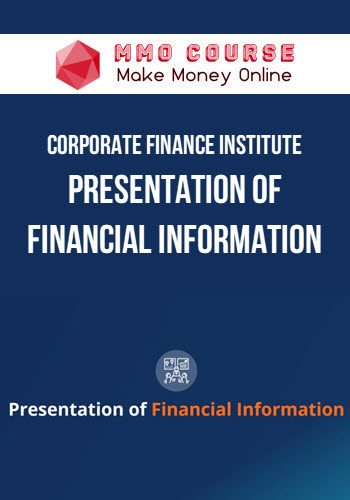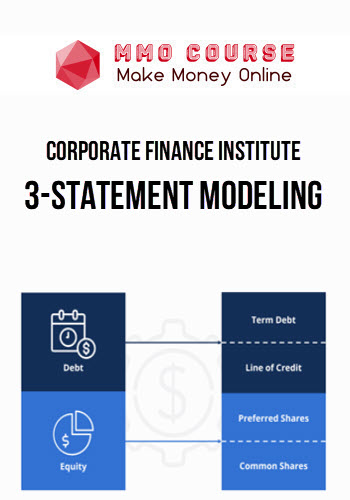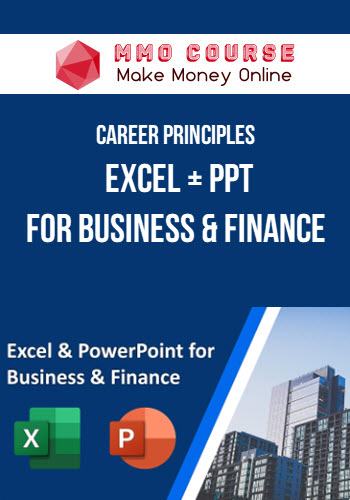Breaking Into Wall Street – Advanced Financial Modeling
$297.00 $104.00
Delivery: Within 24 hours
Description
Breaking Into Wall Street – Advanced Financial Modeling
Here’s How to Master Valuation and M&A and LBO Modeling to Get Promoted in Investment Banking and Win Private Equity and Hedge Fund Offers
- Absorb the nuances of financial modeling
Learn everything you won’t find in a book or other training programs - Learn how to pitch stocks and recommend deals
You’ll get stock pitch and PE deal recommendation templates/examples - Complete 8+ detailed global case studies
These work for investment banking, private equity, and hedge fund roles
Most training programs, books, and online courses in any market are geared toward beginners because… most people are beginners.
And the same is true of financial modeling courses: we get 10x as many questions about basic Excel shortcuts as we do about workflow automation or how to use VBA/Python in Excel to boost your productivity.
Other companies in this market noticed the same thing, so they’ve focused their time and attention on beginners – which has left a big training gap for advanced users.
We developed this Advanced Financial Modeling course to fill that gap and teach you three key skills:
- Key Skill #1: Advanced Investment Banking Models: For example, how do you build a quarterly merger model with options for stock vs. asset vs. 338(h)(10) transactions? What about a spinoff model for a complex transaction involving subsidiaries and cross-border investments?
- Key Skill #2: Private Equity Case Studies and Advanced LBO Modeling: Do you know how to build stub periods and dividend recaps into models? What about bolt-on acquisitions? Are you comfortable with a timed modeling test (3-4 hours) and an open-ended “take home” case with no instructions?
- Key Skill #3: Hedge Fund Case Studies and Stock Pitches: If you’re interviewing at a top hedge fund and have a week to research a company, build a model, and present a long/short stock pitch, could you do it? What about outlining the pitch based on industry/company data and your model and defending it in an interview?
You can find guides, articles, and random videos that touch on these topics, but nothing else puts together all the pieces coherently in a single course.
Most other courses also tend to focus on just one of these careers – but what if you’re unsure of your long-term goals?
Sure, you might be interviewing for private equity roles right now… but you could see yourself joining a hedge fund, staying in banking, or even moving to corporate development.
The BIWS Advanced Financial Modeling course handles all these scenarios and lets you leap up the career ladder, even if you change your ladder or decide to “Spiderman” your way into a whole new set of ladders.
Each case study in the course is about 5 hours, so you could pick it up, prepare for one specific role in 1-2 weeks, and feel very confident about the outcome.
Or, if you want to go into more depth and finish everything over several weeks or months, that’s also an option.
Think of it as a “Choose your own adventure” story but with a lucrative job offer in a different industry behind each door on the path.
You’ll gain the skills required for investment banking, private equity, hedge fund, and credit roles via the 8+ step-by-step global case studies in this course.
They’re based on well-known companies, such as EasyJet and Netflix, but also some interesting-but-lesser-known deals and companies, so you get exposure to everything.
By the end, you’ll be able to:
- Build full 3-statement models starting from a blank sheet in Excel.
- Understand more advanced accounting topics, such as equity investments, noncontrolling interests, pensions, stock-based compensation, and more.
- Use outside industry research and company filings to build revenue and expense projections in different industries.
- Create more advanced valuations, including “spreading the comps” for peer companies and features like stub periods and net operating losses (NOLs) in a DCF.
- Pitch mispriced companies with full outlines and process walkthroughs for hedge fund stock pitches and equity research reports.
- Build quarterly merger models with different options for synergies, exchange ratios, and deal structures (stock vs. asset vs. 338(h)(10)).
- Analyze more “exotic” deal types, such as tax-free spinoffs and majority-stake acquisitions, and learn how the modeling differs.
- Complete advanced LBO modeling tests and private equity take-home case studies with ease.
- Make investment recommendations in all types of buy-side case studies.
- Recommend debt, equity, or convertible bonds to clients based on their financial and credit profiles.
If you want to gain the skills and experience to make your resume jump to the top of the “interview” stack, answer interview questions and case studies with ease, and advance to the top once you start working, this is the course for you.
What You’ll Learn In Advanced Financial Modeling
Advanced Accounting and 3-Statement Modeling
WHY IT’S IMPORTANT: These lessons teach you how to build financial statement models starting from blank Excel sheets and how to forecast more advanced line items, such as convertible bonds, noncontrolling interests, and more.
You’ll learn how to create the forecasts in these lessons and how to find, simplify, and present the data in the first place – even when the company’s filings are confusing.
More importantly, you’ll also learn how to use your model to examine different scenarios for a company and recommend the best financing option (e.g., X% equity and Y% debt) based on the targeted credit stats and liquidity figures.
The Advanced Accounting lessons are a supplemental reference that will allow you to look up certain topics and get quick answers and reference models on everything from pensions to equity investments, noncontrolling interests, convertible debt, stock-based compensation, and different security types.
Advanced Valuation/DCF and Stock Pitch
WHY IT’S IMPORTANT: This training helps you master the “data-driven valuation process,” based on a detailed review of company filings and industry data – and put it all together into a client advisory recommendation or stock pitch.
In these lessons, you’ll complete an open-ended case study based on Jazz Pharmaceuticals, where you have to project each of the company’s drugs and turn your cash flow projections into a detailed valuation and DCF.
You’ll practice not just data gathering and modeling of more advanced features (stub periods, changing discount rates, normalized terminal years, etc.), but you’ll also learn the “why” behind any valuation.
Specifically, you’ll learn how to turn the output into a full hedge fund stock pitch, an equity research report, and an investment banking pitch book – and see how you can adapt a single model to cover different real-world use cases.
Advanced Merger Models, Spinoffs, and Majority Stakes
WHY IT’S IMPORTANT: These lessons walk you through more advanced merger models and transaction modeling for spinoffs and majority-stake deals – not exactly “interview prep,” but common on-the-job tasks.
The first case study here, for Builders FirstSource / BMC Stock Holdings, walks you through a quarterly merger model with options for different transaction structures and pricing terms (e.g., fixed vs. floating exchange ratios with collars). It’s concise coverage of an ordinarily complex topic.
The second case study is based on SunPower’s spinoff of Maxeon and walks you through the financial models for each one, the financial statement adjustments in a spinoff, and the Sum of the Parts (SOTP) valuation to determine if the deal is a good idea in the first place.
And the final case study is based on Fortum’s majority-stake acquisition in Uniper (European energy/power companies); you’ll learn why merger models can behave counterintuitively in these deals and why an acquirer might decide to purchase 70% vs. 100% of another company.
Advanced LBO Models and Private Equity Case Studies
WHY IT’S IMPORTANT: This training walks you through an advanced LBO model (4-hour case study) and a take-home case study (1 week) based on a company of your choosing; the full solutions and investment recommendation presentations are included.
You can easily find simple LBO models and case studies online – we even have several examples on our YouTube channel! But it’s far more difficult to find complex examples with step-by-step solutions.
That’s what these lessons offer: full walkthroughs of these more advanced case studies, with the ability to ask us questions about anything and get a same-day response. And you get not just the blank and completed models, but also the full investment recommendation presentations.
Some of the more advanced features in these case studies include stub periods, variable close dates, cash-free/debt-free assumptions, working capital adjustments, a leveraged dividend recap, net operating losses, a 6-tranche debt schedule, and bolt-on acquisitions.
Plus, you’ll also learn how to analyze a deal from the perspective of both the equity investors (the PE firm) and the lenders (the debt investors).
Advanced Credit Analysis and Convertible Bonds
WHY IT’S IMPORTANT: These lessons give you a crash course on bond math and analysis, equity vs. debt vs. convertible bonds, and how to make financing recommendations to companies and potential clients.
Credit analysis is a bit of an afterthought in most training programs because it doesn’t seem “interesting” or “exciting” in the same way as a stock pitch or advanced LBO model.
And that’s why we approach it differently by using Netflix as the subject company and combing through its statements and loan documents to build a full 3-statement model and credit analysis for the company.
You’ll learn everything from real-life debt schedules to the impact of different financing options on WACC to the credit stats and ratios in different scenarios.
And then, in the bond analysis lessons, you’ll master concepts like the Yield to Maturity (YTM) and Yield to Worst (YTW), duration and convexity, call and put options, make-whole prices, and the blended cost and valuation of convertible bonds.
By the end, you’ll be able to advise the company on its ideal capital structure and recommend for or against refinancing specific issuances.
Sale Page: Breaking Into Wall Street – Advanced Financial Modeling
Delivery Policy
When will I receive my course?
You will receive a link to download your course immediately or within 1 to 21 days. It depends on the product you buy, so please read the short description of the product carefully before making a purchase.
How is my course delivered?
We share courses through Google Drive, so once your order is complete, you'll receive an invitation to view the course in your email.
To avoid any delay in delivery, please provide a Google mail and enter your email address correctly in the Checkout Page.
In case you submit a wrong email address, please contact us to resend the course to the correct email.
How do I check status of my order?
Please log in to MMOCourse account then go to Order Page. You will find all your orders includes number, date, status and total price.
If the status is Processing: Your course is being uploaded. Please be patient and wait for us to complete your order. If your order has multiple courses and one of them has not been updated with the download link, the status of the order is also Processing.
If the status is Completed: Your course is ready for immediate download. Click "VIEW" to view details and download the course.
Where can I find my course?
Once your order is complete, a link to download the course will automatically be sent to your email.
You can also get the download link by logging into your mmocourse.hk account then going to Downloads Page.
Related products
Total sold: 1
Total sold: 1









